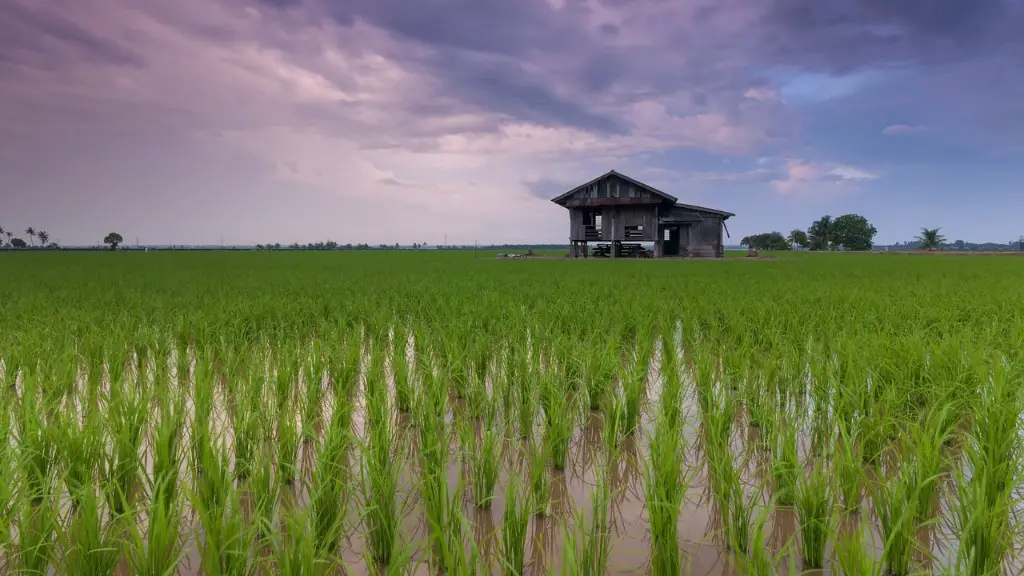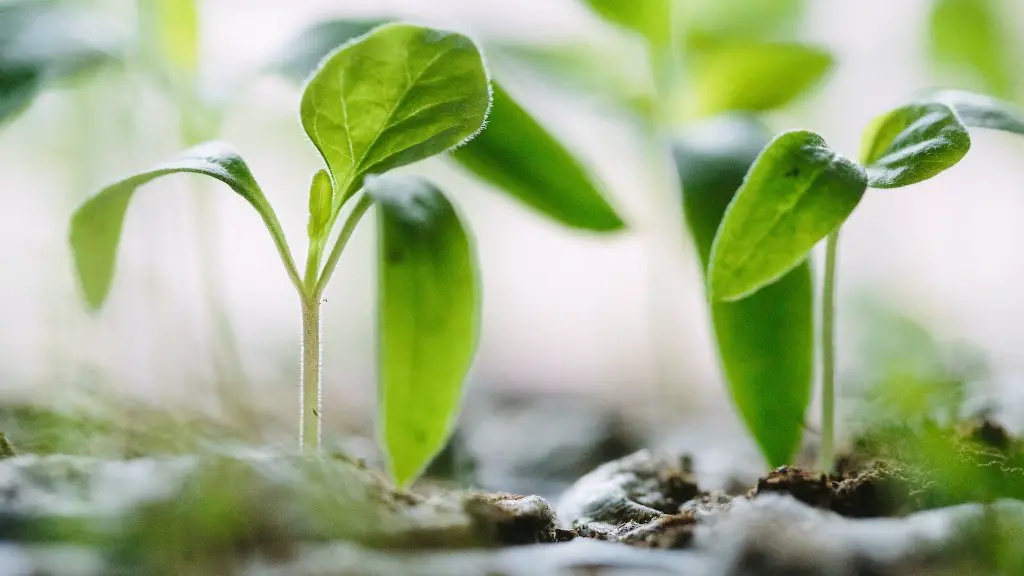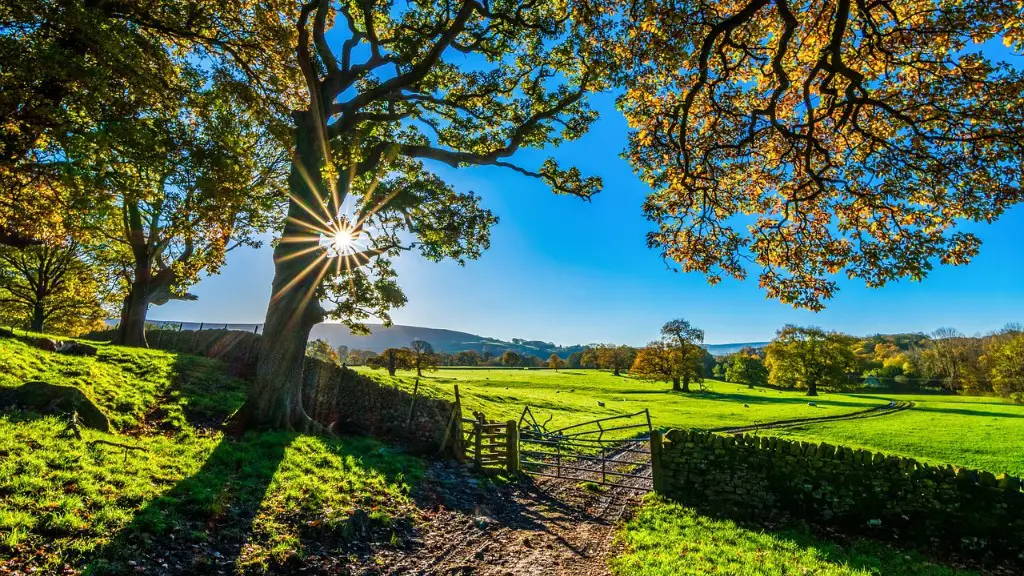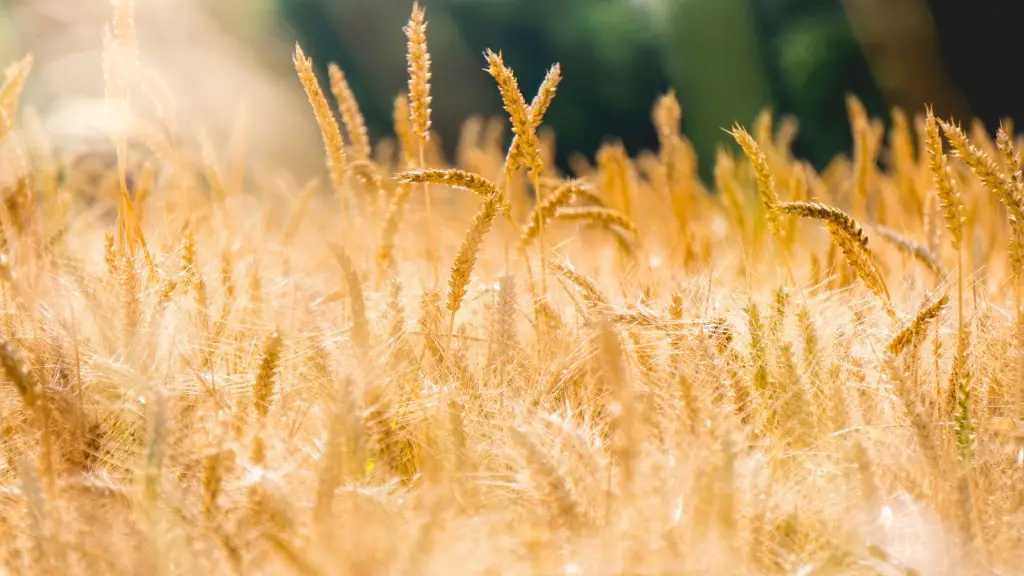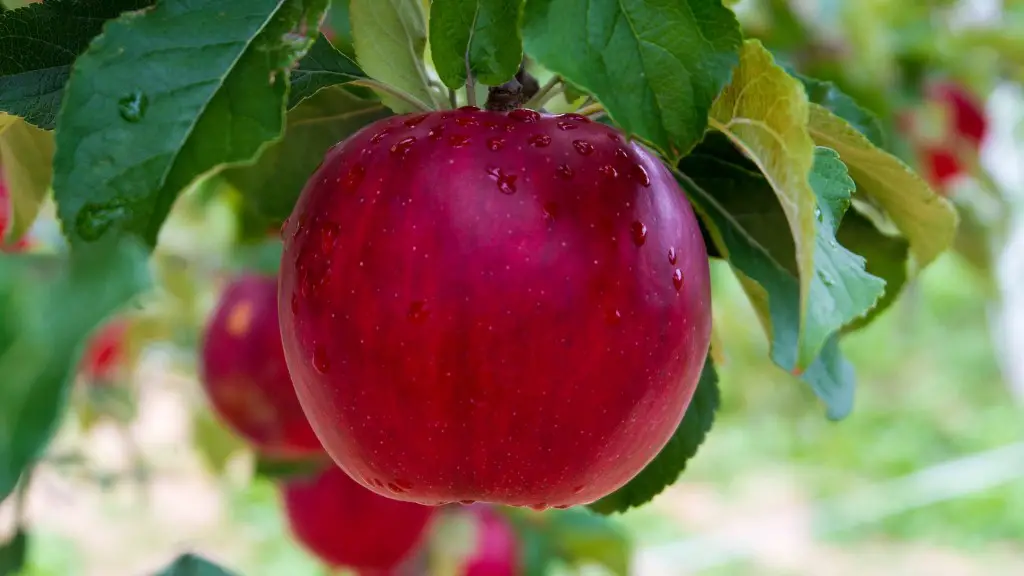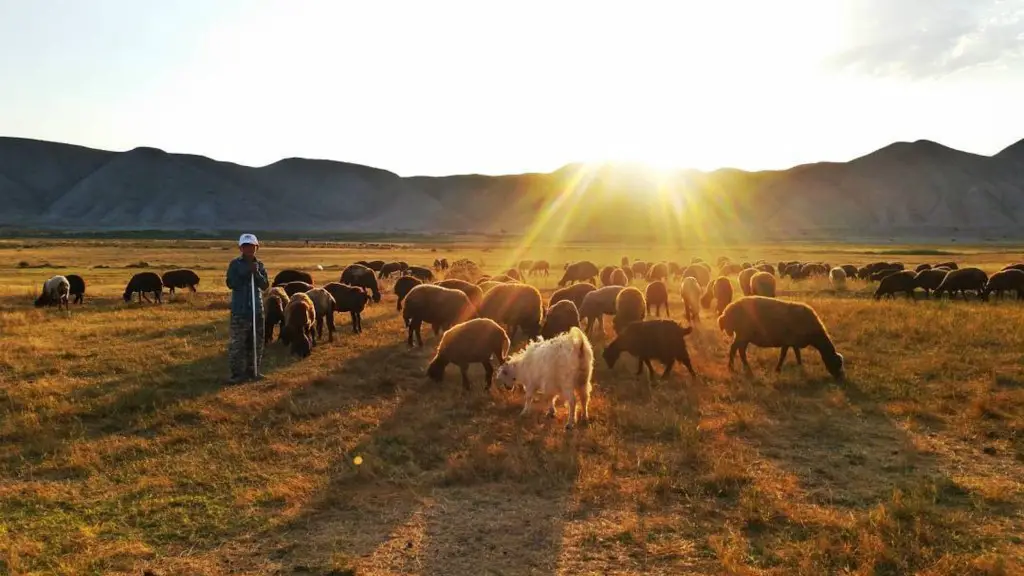Over the past century, the burning of fossil fuels, such as coal and oil, has released large amounts of carbon dioxide and other greenhouse gases into Earth’s atmosphere. These gases trap heat and cause the Earth’s average surface temperature to rise, a process known as global warming. Climate change refers to a broad array of environmental degradation that is predicted to result from this increased temperature, including more extreme weather events, sea level rise, and ecosystem damage.
Though it is not generally recognized, agriculture is a significant contributor to climate change. Agriculture, forestry, and other land-use practices account for 24 percent of global greenhouse gas emissions – more than the entire transportation sector. And, as the world’s population continues to grow, the demand for food will only increase, likely exacerbating the problem. There are a number of ways in which agriculture contributes to climate change, including:
• Deforestation: Clearing land for crops and livestock is a major cause of deforestation, which releases carbon dioxide into the atmosphere and eliminates trees that would otherwise absorb the gas.
• Methane emissions: Methane is a powerful greenhouse gas, and agricultural activities like livestock farming and rice cultivation are significant sources of methane emissions.
• Fertil
Agriculture causes climate change in two ways: through the release of greenhouse gases and through land-use change.
Greenhouse gases are released when farmers burn fossil fuels to power their equipment, when livestock burp and fart, and when agricultural chemicals are used and then released into the atmosphere. Land-use change occurs when farmers clear forests or convert grasslands to cropland. This conversion releases carbon dioxide, the most important greenhouse gas, into the atmosphere and disturbs the natural landscape, which can lead to further climate change.
How did agriculture affect climate change?
Climate change is a huge threat to agriculture. It can affect crops, livestock, soil and water resources, rural communities, and agricultural workers. However, the agriculture sector also emits greenhouse gases into the atmosphere that contribute to climate change.
There are a few ways that agriculture can help to mitigate climate change. For example, farmers can implement practices that help to sequester carbon in the soil. They can also choose to grow crops that are more resilient to climate change, such as drought-resistant varieties.
It is clear that the agriculture sector has a big role to play in both the cause and the solution of climate change. It is important for farmers to be aware of the ways that they can help to mitigate the problem.
Agriculture is the leading source of pollution in many countries. Pesticides, fertilizers and other toxic farm chemicals can poison fresh water, marine ecosystems, air and soil. They also can remain in the environment for generations.
This is a major problem that needs to be addressed. We need to find ways to reduce the amount of pollution that agriculture creates. This may mean changing the way we farm, using less toxic chemicals, or finding other ways to reduce pollution.
What percent of climate change is caused by agriculture
Agriculture is one of the main sources of greenhouse gas emissions, accounting for 11% of total emissions in 2020. The main sources of agricultural emissions are livestock (such as cows), agricultural soils, and rice production. Agricultural emissions have a significant impact on climate change, and reducing these emissions is a key part of mitigating climate change.
The large-scale, conventional farming system has come under scrutiny in recent years for its negative impact on the environment. This system of farming focuses on intensive single crop production, mechanization, and depends on fossil fuels, pesticides, antibiotics, and synthetic fertilizers. While this system yields high production levels, it also contributes to climate change, pollutes air and water, and depletes soil fertility. As awareness of the negative impacts of this farming system grows, there is an increasing demand for more sustainable and environmentally friendly methods of farming.
What is the negative impact of agriculture?
Agriculture is one of the leading causes of environmental degradation. The main problems caused by agriculture include: climate change, deforestation, biodiversity loss, dead zones, genetic engineering, irrigation problems, pollutants, soil degradation, and waste. These problems are all major threats to the environment and need to be addressed urgently.
Climate change affects agriculture in a number of ways; including through changes in average temperatures; rainfall and climate extremes with an important impact on soil erosion (ie floods, drought, etc): changes in pests and diseases, changes in atmospheric carbon dioxide, changes in the nutritional quality of some plants and changes in sea level. These in turn impact on crop yields, livestock productivity, farm infrastructure and access to markets.
Is agriculture worst for climate change?
Climate change is caused by the release of greenhouse gases into the atmosphere. These gases trap heat and cause the Earth’s temperature to rise.
Factory farming is a major contributor to climate change. The animals raised in these facilities produce huge volumes of methane, a powerful greenhouse gas. Additionally, the land used for factory farming is often cleared of trees and other vegetation, which increases the amount of carbon dioxide in the atmosphere.
The impacts of climate change are already being felt by people and ecosystems around the world. And if we don’t take action to reduce greenhouse gas emissions, the situation will only get worse.
Reducing our reliance on factory-farmed meat and dairy is one of the most important things we can do to help mitigate climate change. By eating less meat and dairy, we can reduce the demand for these products, which will help reduce the amount of greenhouse gases produced by factory farming.
Fossil fuels are by far the largest contributor to global climate change, accounting for over 75 per cent of global greenhouse gas emissions and nearly 90 per cent of all carbon dioxide emissions. As greenhouse gas emissions blanket the Earth, they trap the sun’s heat, leading to a rise in global temperatures.
Fossil fuels are a finite resource, and as we continue to burn them at an ever-increasing rate, we are running out of time to find a replacement for them. renewable energy sources like solar, wind and hydro power are becoming increasingly more viable options, but they will need to be scaled up significantly if we are to make a dent in the problem.
Cutting our reliance on fossil fuels is not going to be easy, but it is essential if we are to avert the worst effects of climate change.
What are the 5 major consequences of agriculture
1. Soil fertility loss: Agricultural activities can lead to soil fertility loss through nutrient depletion, soil erosion and degradation.
2. Eutrophication of water bodies: Agricultural activities can lead to the eutrophication of water bodies through the run-off of fertilisers and manure.
3. Deforestation: Agricultural activities can lead to deforestation through the conversion of forested land to agricultural land.
4. Climate change: Agricultural activities can contribute to climate change through emissions of greenhouse gases.
5. Pesticide pollution: Agricultural activities can lead to pesticide pollution through the use and misuse of pesticides.
Harvesting the crop represents a significant amount of nutrients, water, and energy being taken from the land This leaves the land barren, and unfriendly for the growth and development of new organisms and ecosystems. This is especially true of land used for industrial monoculture farms. By rotating crops and using sustainable farming practices, we can help to mitigate the negative impact on the land.
What is the biggest problem in agriculture?
The loss of agricultural land is a big problem facing agriculture today. This is because as land is lost, there is less land available to grow crops. This can lead to a decrease in crop yields, which can have a negative impact on the economy. The other big problem facing agriculture is the lack of diversity in crops. This is because as the world population increases, there is a need for more food. However, if there is only a limited number of crops available, this could lead to problems in the future.
While the development of agriculture in a region can have positive effects on the natural life, oxygen production and climate in the region, it can also cause negative effects such as inorganic nitrate pollution, pesticide pollution and salinity problems, especially in regions where intensive agriculture is practiced.
What are the 3 main causes of climate change
The earth’s surface temperature has risen due to an increase in greenhouse gas emissions, causing the greenhouse effect. Carbon dioxide, methane, and nitrous oxide concentrations are now more abundant in the earth’s atmosphere than at any time in the last 800,000 years, making the earth’s atmosphere more prone to trapping heat. This has led to a rise in the earth’s surface temperature, which can cause various problems such as melting polar ice caps, sea level rise, and more extreme weather conditions. To combat this, it is important to reducing greenhouse gas emissions by implementing policies to encourage renewable energy use, improving energy efficiency, and curbing deforestation.
The transportation, industry, agriculture, and land use and forestry sectors are four global emission sectors that roughly correspond to the United States sectors. These sectors are responsible for a large portion of global emissions, making them a significant contributor to climate change. In order to reduce emissions from these sectors, it is necessary to take action at the global level.
What are the 5 cause of climate change?
Climate change is a naturally occurring phenomenon that has been happening for centuries. The main natural cause of climate change is variations in the sun’s output. Other causes include Earth’s orbit, volcanoes, and changes in greenhouse gas concentrations.
Water Use & Water Pollution:
Growing food takes a lot of water, and if that water is not properly managed, it can lead to water pollution. Water pollution can come from a variety of sources, including runoff from farms, livestock operations, and factories.
Greenhouse Gas Emissions:
Food production is a major source of greenhouse gas emissions. These emissions come from a variety of sources, including the production of fertilizer, the use of heavy machinery, and the raising of livestock.
Environmental Contaminants & Pollutants:
Food production can also lead to the release of environmental contaminants and pollutants into the air, water, and soil. These contaminants can come from a variety of sources, including pesticides, herbicides, and fertilizers.
Depletion of Natural Resources:
The production of food can also lead to the depletion of natural resources, such as water, soil, and forests. This depletion can occur when farms expand into new areas, when resources are used to produce livestock feed, or when forests are cleared to grow crops.
Zero Waste Grocery Stores:
There is a growing movement of grocery stores that are committed to reducing food waste. These stores offer a variety of products that
Warp Up
The greenhouse gas emissions from agriculture are a large and growing contributor to climate change. Agriculture is responsible for about 10 percent of total U.S. greenhouse gas emissions, and the sector is projected to be the source of an increasing share of emissions in the future. The largest sources of greenhouse gas emissions from agriculture are enteric fermentation—methane emissions from livestock—and manure management—methane and nitrous oxide emissions from animal manure. Other agricultural sources of greenhouse gas emissions include field burning of agricultural residues, glyphosate application, and fertilizer use.
It is clear that agriculture has a significant impact on climate change. The way we grow and raise our crops, the use of pesticides and fertilizers, and our overall approach to agriculture all contribute to climate change. As the world population continues to grow, and the demand for food increases, it is imperative that we find more sustainable and environmentally friendly ways to grow our food.
